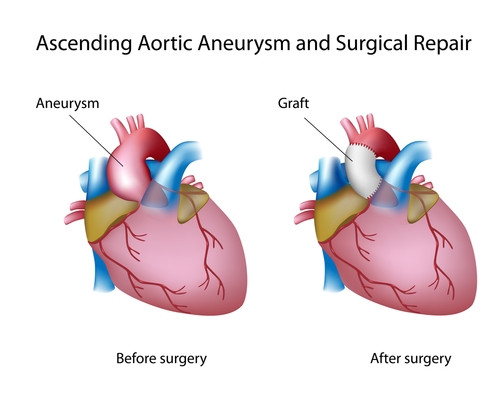New research reveals patients with psoriasis have a higher risk of suffering from abdominal aortic aneurysms (AAA), and the probability increases with the severity of the condition. The study, “Nationwide Study on the Risk of Abdominal Aortic Aneurysms in Patients With Psoriasis,” was published in the American Heart Association journal, Arteriosclerosis, Thrombosis and Vascular Biology.
A chronic and autoimmune disease, psoriasis is characterized by an attack from the body’s own immune system to healthy cells, resulting in abnormal red, itchy, and scaly patches of skin. Research now shows it can lead to an abdominal aortic aneurysm — an enlargement of the main blood vessel that provides blood to the abdomen. This type of aneurysm is life-threatening, but generally doesn’t cause symptoms until it ruptures.
“Psoriasis must be considered as a systemic inflammatory disease rather than an isolated skin disease. Increased awareness on heightened risk of other cardiovascular diseases, including AAA, in patients with psoriasis is also required,” said Usman Khalid, M.D., lead author of the study and Ph.D. fellow in the Department of Cardiology at Herlev and Gentofte Hospital in Denmark, in a press release.
The study was conducted using Danish nationwide registers, and included 59,423 patients with mild psoriasis and 11,566 patients with severe psoriasis from 1997 to 2011. Researchers then followed these patients until they were either diagnosed with abdominal aortic aneurysms, died, migrated, or the study came to and end.
The study found that the rate of developing abdominal aortic aneurysm (per 10,000 person years) was 7.30 for patients with mild psoriasis, 9.87 for patients with severe psoriasis, and 3.72 for the general population.
“Compared to the general population, the adjusted incidence rate ratios were significantly increased for severe psoriasis at 1.67. That’s a 67 percent greater risk of AAA likelihood for severe psoriasis sufferers,” Khalid said.
The study proposed an explanation for the increased risk of AAA in psoriasis patients based on the cell function. While the pathogenesis of abdominal aortic aneurysm is known to be related to increased inflammation, including T-helper 17 cell-mediated effects, psoriasis is considered a T-helper 17-driven chronic inflammatory disease. Therefore, the potentially overlapping inflammatory mechanisms may justify this correlation between the two conditions.
“Clinicians need to educate and assist their patients with psoriasis in lifestyle and risk factor modification to facilitate cardiovascular disease risk reduction,” said Khalid, who believes the findings significantly increase understanding of the clinically relevant risk of cardiovascular disease for patients with psoriasis.
Researchers advise that further investigation might be needed to understand if psoriasis patients need increased ultrasonic screening for abdominal aortic aneurysm, and if anti-inflammatory treatment for psoriasis may reduce the risk of abdominal aortic aneurysm.


